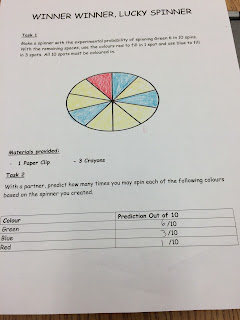Rich Task vs Poor Task: How to make math more interesting!
Hello Everyone,
Today I'd like to go into some new ideas of how to make math more interesting for those who either hate math because it seems way to complicated and those who find it boring because they are not being challenged enough.
But what is a rich task in math?
Good question! After reading this article by Jennifer Piggott it came to a definition about what a rich task is. Rich Tasks have a range of characteristics that offer different opportunities to meet the different needs of learners at different times. It involves the support and questioning that is used by the teacher and the roles that learners are encouraged to adopt. A rich task is not rich on its own but in what it is made of.
The characteristics of a rich task were as follows:

Today I'd like to go into some new ideas of how to make math more interesting for those who either hate math because it seems way to complicated and those who find it boring because they are not being challenged enough.
But what is a rich task in math?
Good question! After reading this article by Jennifer Piggott it came to a definition about what a rich task is. Rich Tasks have a range of characteristics that offer different opportunities to meet the different needs of learners at different times. It involves the support and questioning that is used by the teacher and the roles that learners are encouraged to adopt. A rich task is not rich on its own but in what it is made of.
The characteristics of a rich task were as follows:
- accessible and extendable,
- one which allows learners to make decisions,
- involving learners in testing, proving, explaining, reflecting and interpreting,
- promoting discussion and communications,
- encouraging originality and invention,
- encouraging 'what if' and 'what if not' questions,
- enjoyable and contains the opportunity for surprise
Here is an example of a rich task question:

It gives the students an opportunity to take their knowledge of take whichever number they seem to be more comfortable with and find the answer on their own. This is an engaging task because it lets the student figure out how they can design something from real life on their own. By not giving them exact numbers and giving them estimates it makes it easier for a student to figure it out on their own and gives them that ability to challenge themselves.
We read another article by Steve Hewson. It too described what a mathematically rich task looks like but what really stuck out to me in this article was that he found research that stated "students who are given opportunities to work on their problem solving skills enjoy the subject more, are more confident and are more likely to continue studying mathematics, or mathematically related subjects, beyond the age of 16." This seems interesting because we sometimes hear how many students don't pursue math past a certain age or grade but this is telling us that if we give the students more then they keep going. It does make sense though that if something is enjoyable and not a drag then it will make things better for everyone in the long run and make them want to keep pursuing it.
Here is a link to a website that gives some really cool real world math problems for grade 7. You can watch the videos and ask whatever questions from it. You can change them up and make them more engaging for the students. But having that real world focus/theme can really get the students into trying out these math problems.
Well that is it for now. Come back next week for another exciting post about learning how to teach math!



Comments
Post a Comment